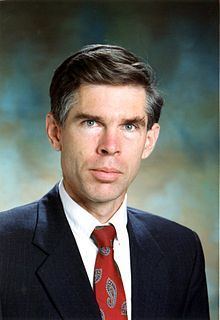Nationality American Name Richard Thompson Role Author | Occupation Mathematician, author Religion Hinduism | |
 | ||
Books Forbidden Archeology, Mysteries of the sacred un, Alien Identities, Vedic Cosmography and Astro, Maya: The World as Virtual Re | ||
Mysterious Origins of Man (1996) - Deleted Scenes - Richard L. Thompson
Richard Leslie Thompson, also known as Sadaputa Dasa (February 4, 1947 – September 18, 2008), was an American mathematician, author and Gaudiya Vaishnava religious figure, known principally for his promotion of Vedic creationism and as the co-author (with Michael Cremo) of Forbidden Archeology: The Hidden History of the Human Race (1993), which has been widely criticised by the scientific community. Thompson also published several books and articles on religion and science, Hindu cosmology and astronomy. He was a member of the International Society for Krishna Consciousness (popularly known as the Hare Krishna movement or ISKCON) and a founding member of the Bhaktivedanta Institute, the branch of ISKCON dedicated to examining the relationship of modern scientific theories to the Vaishnava worldview. In the 'science and religion' community he was known for his articulation of ISKCON's view of science. Danish historian of religion Mikael Rothstein described Thompson as "the single dominating writer on science" in ISKCON whom ISKCON has chosen to "cover the field of science more or less on his own". C. Mackenzie Brown, professor of religion at Trinity University, San Antonio, Texas, described him as "the leading figure" in ISKCON's critique of modern science.
Contents
- Mysterious Origins of Man 1996 Deleted Scenes Richard L Thompson
- Richard Thompson The Yugas and Vedic Chronology
- Biography
- Forbidden Archeology
- References
Richard Thompson - The Yugas and Vedic Chronology
Biography
Richard L. Thompson was born in Binghamton, New York, in 1947. In 1974 he received a Ph.D. in mathematics from Cornell University. In the same year he formally became a member of ISKCON, receiving spiritual initiation from ISKCON's founder, A. C. Bhaktivedanta Swami Prabhupada, and adopting the spiritual name Sadaputa Dasa. Thompson carried out research in the fields of statistical mechanics, probability theory, and mathematical biology. He published scholarly articles in refereed journals and series, such as Journal of Mathematical Geology, Remote Sensing of the Environment, Biosystems, and International Review of Cytology. In 1976 he became a founding member of the Bhaktivedanta Institute, the scientific branch of ISKCON dedicated to examining the relationship of modern scientific theories to Swami Prabhupada’s Vaishnava worldview. Soon after joining ISKCON, Thompson became "ISKCON's dominating figure in science" and "established himself as the leading figure in the movement's critique of modern science in the light of Vedic spiritual (or 'higher-dimensional') science." He formulated ISKCON's view on the concept of "higher-dimensional science" and wrote extensively on scientific subjects from this perspective. In support of ISKCON's theology, he made research and analysis of the relation between the Vaishnava theological worldview and modern science.
Thompson died on September 18, 2008. His body was found at the bottom of his swimming pool at his home in Alachua, Florida, USA. He had suffered a heart attack, a condition there has been some history of in his family.
Forbidden Archeology
Coauthor Michael Cremo writes in the Preface to the first edition, that the work's central claim is that anomalous paleontological evidence dating in the many hundreds of thousands of years, and with some, such as the Laetoli footprints, stretching toward the low millions, suggest that modern man "perhaps ... coexisted with more apelike creatures," and that the scientific establishment has suppressed the fossil evidence of extreme human antiquity. This argument has been critiqued by mainstream scholars from a variety of disciplines.
